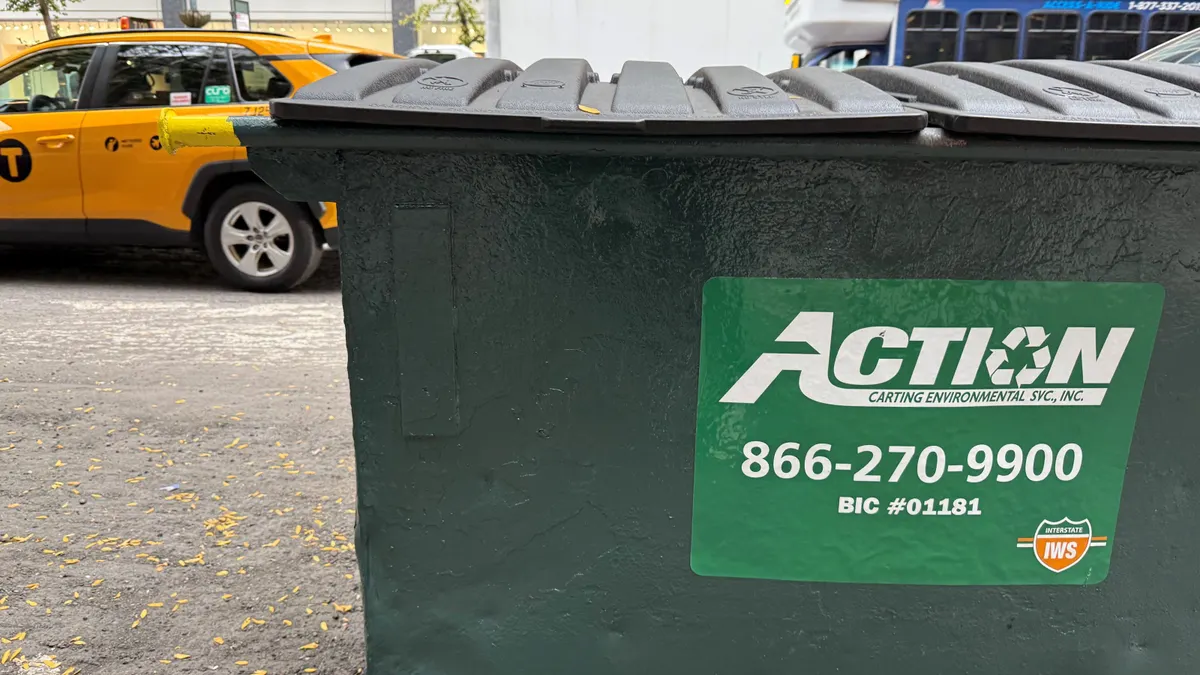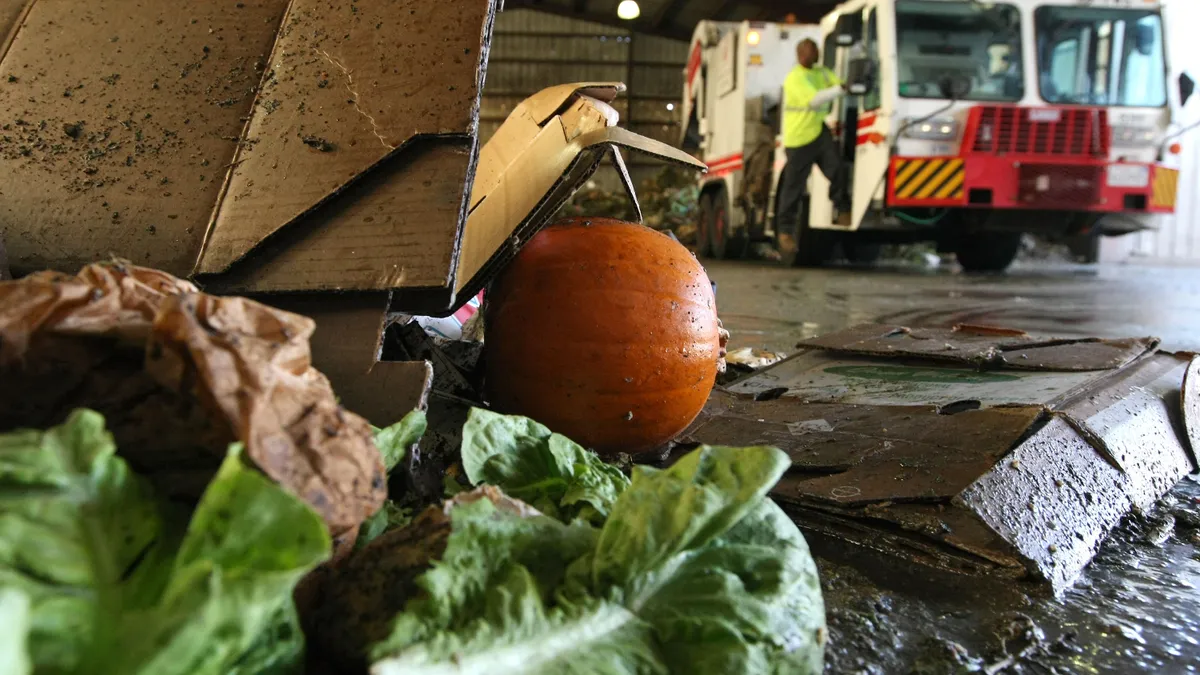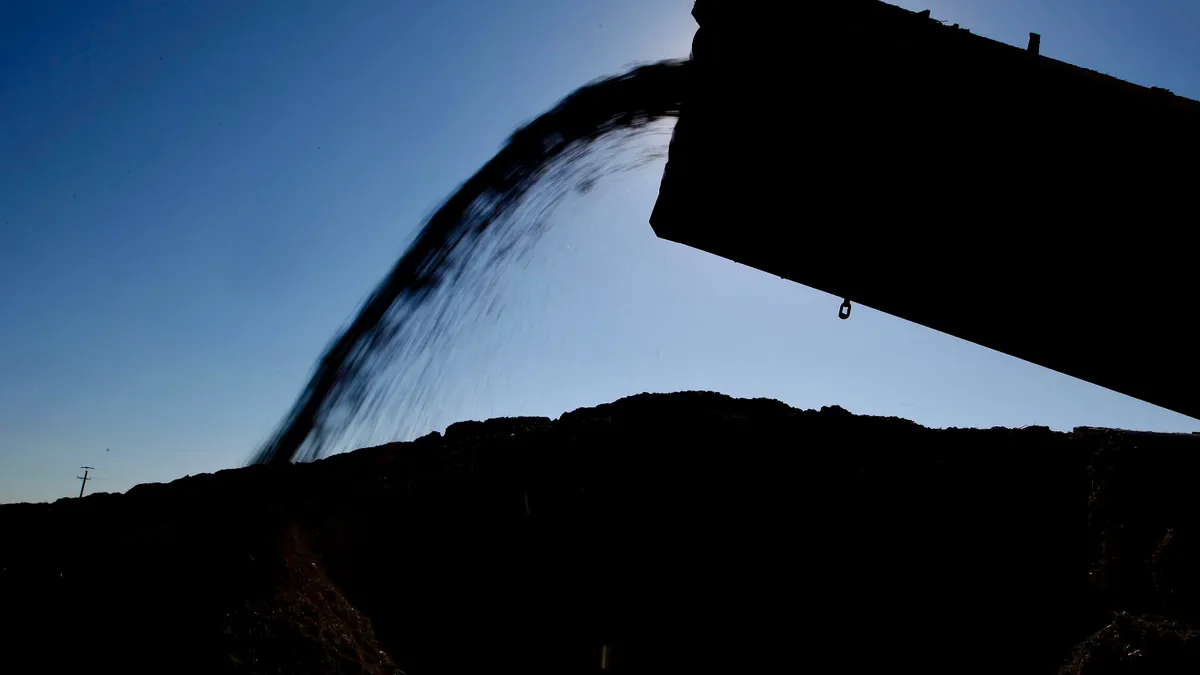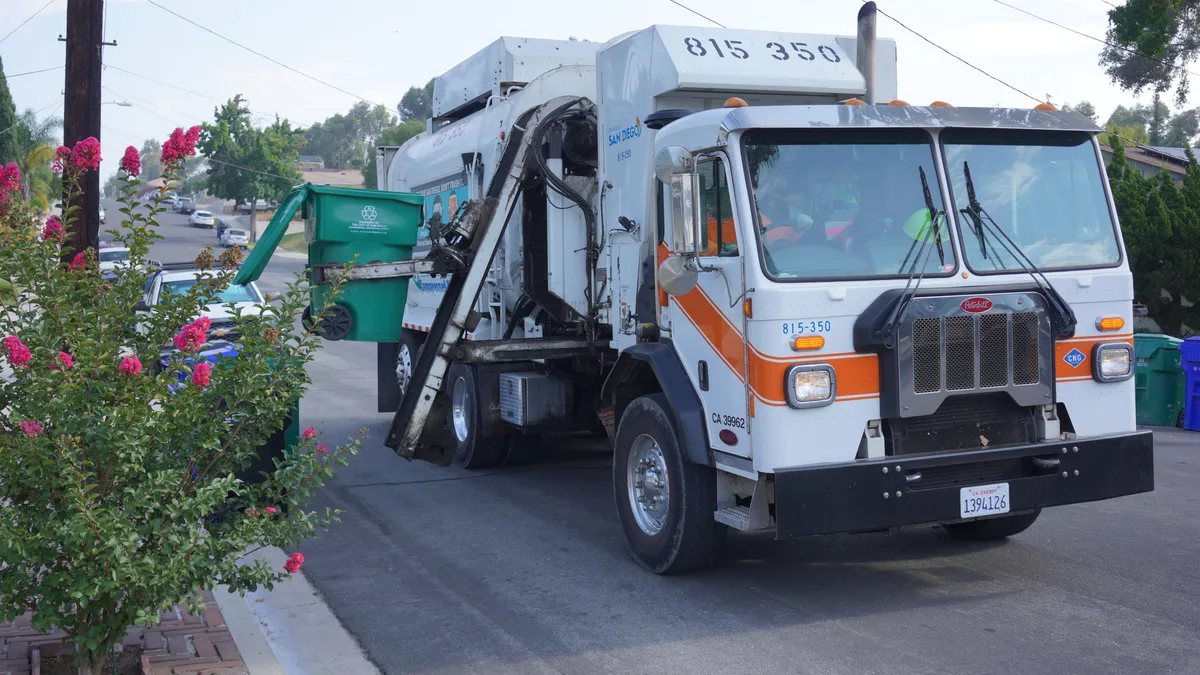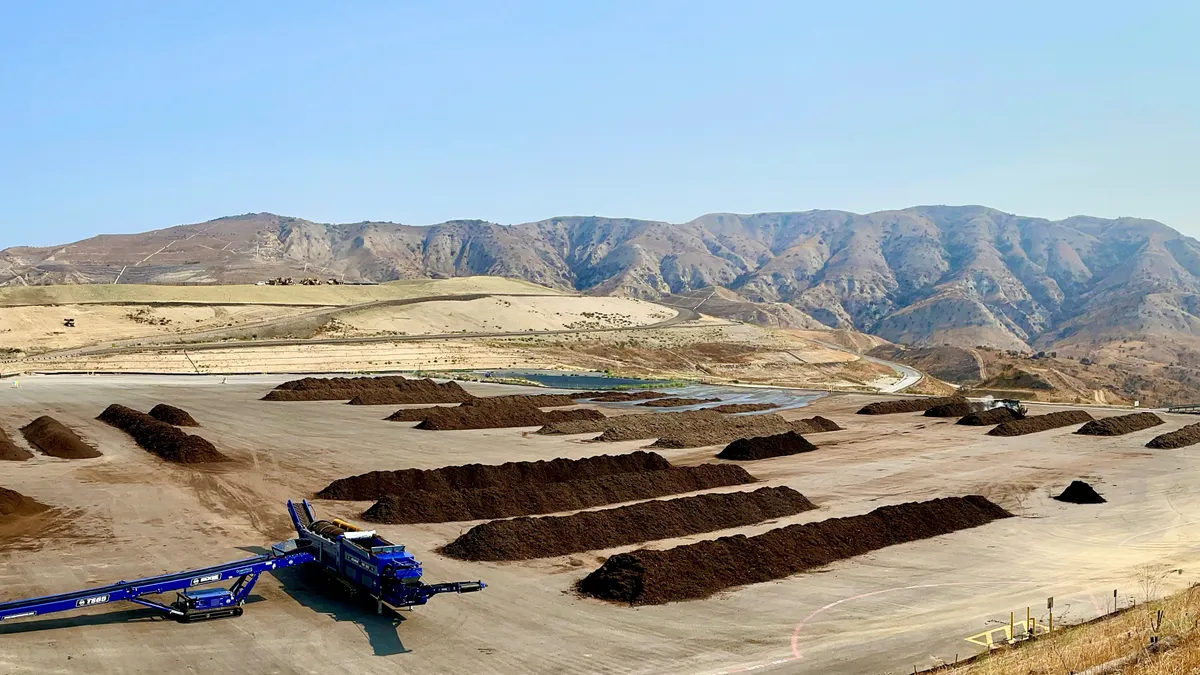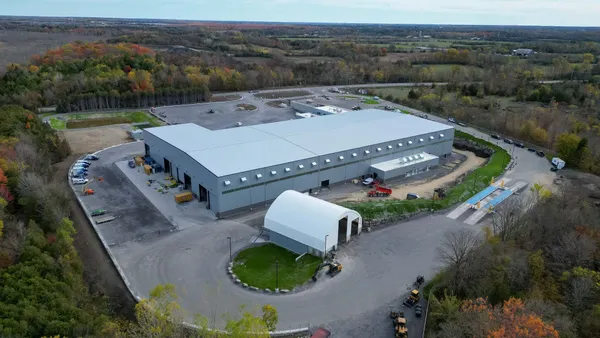Editor’s note: This is the seventh in a multipart series exploring the market effects of California’s sweeping organic waste reduction law, SB 1383.
This has been the biggest year yet for efforts to meet the requirements of California’s organics recycling law, but some market participants are already discussing whether the state’s 2025 goals should be revised.
While large companies and local governments continue to expand collection and processing infrastructure, certain market participants have also raised concerns about their operations being limited by aspects of the SB 1383 regulations. Now, the policy is getting renewed attention at the state level amid a broader focus on the rising cost of recycling services.
Legislative leaders asked the Little Hoover Commission — an independent state oversight agency appointed by state policymakers — to look at general recycling issues in light of these concerns, according to Executive Director Ethan Rarick. Commissioners and staff ultimately narrowed their focus to SB 1383, considered among the more complex topics that the group has taken on, due in part to its climate change implications.
"They felt that the implementation of 1383 is a big task, and it was an area where they thought a study would be timely,” Rarick said. “It’s important that the state implements 1383 well."
The commission’s final report will be non-binding, but Rarick said it’s common for legislators to adopt policy based on its recommendations. Gov. Gavin Newsom has already signed two laws within the past year to allow flexibility on compliance timing for jurisdictions. Meanwhile, the state is under pressure to make up for lost time during the pandemic after missing its initial target to show an incremental reduction in disposal volumes by 2020.
“Until this year, CalRecycle's regulations to meet the organics reduction targets were not enforceable, so it makes sense that the 2020 diversion rates required in 1383 were not met. Incentive dollars are an effective tool in jump-starting markets, but they can only go so far,” said Shereen D’Souza, CalEPA’s deputy secretary for climate policy and intergovernmental relations, during a Sept. 8 hearing. “All this said, local jurisdictions are making a lot of progress since the beginning of this year."
CalRecycle estimated in September that around half of the state’s approximately 540 jurisdictions had organics collection programs in place, with more in the works. A 2021 law gave jurisdictions some breathing room from initial 2022 compliance requirements, and 128 of them have taken the state up on that.
"I would really advise against changing the target,” said CalRecycle Director Rachel Machi Wagoner during the Sept. 8 hearing. The agency is trying to get implementation back on track after a “very uncertain time,” she said, pointing to the goal as a key factor for infrastructure developers. "Certainty that we are going to continue on this regulatory path is really crucial to them being able to invest and build here in California.”
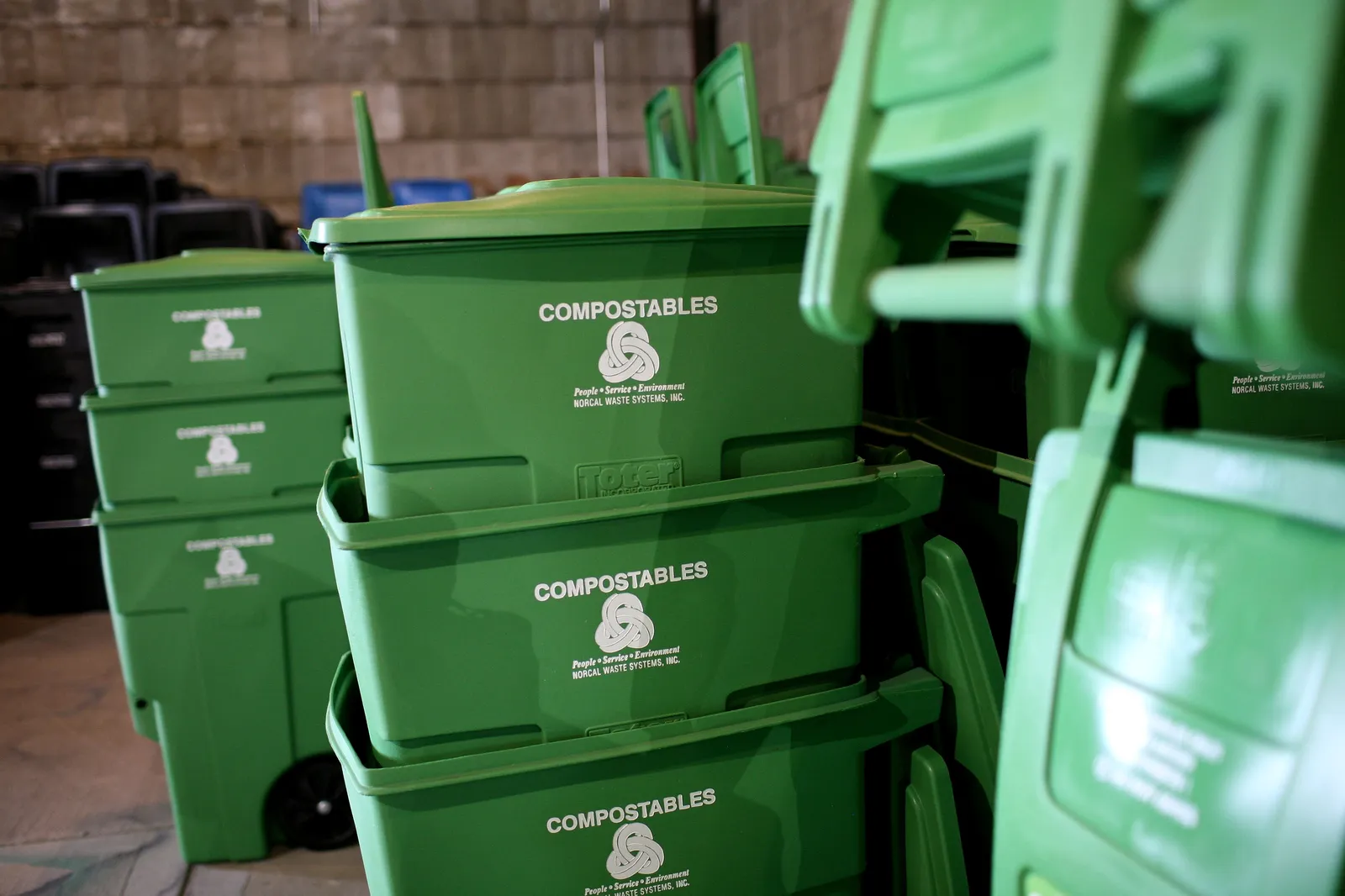
Waste separation and culture change
One of the most visible changes to come from the law is a proliferation of new collection carts and containers for organic waste throughout the state. Figuring out the effectiveness and cost of various collection methods is one of the top discussion points within California’s waste industry.
CalRecycle still doesn’t have full data on which collection model each jurisdiction has selected, but the agency believes the vast majority are pursuing the “standard” model — a three-bin system where food scraps are often commingled with yard waste. Machi Wagoner said at the hearing that costs have varied, with some jurisdictions reporting no rate increases for customers while others saw hikes ranging from $2 to $10 per month.
The SB 1383 regulations are written in a way to make three carts the smoothest path to compliance, and supporters say this comes with the added benefit of instilling behavior change.
“If we just provide solutions at the back end, that consciousness isn’t going to shift at the bin, and that’s what we really need to happen to get people to think about their waste,” said Rachel Oster, principal at consulting firm Diversion Strategies.
“I do think that we have not yet grasped the power of the community yet, and once we do, I think that our streams are going to get cleaner, and it’s going to be a better system. But I think we have to first embrace data and messaging and coming out of the dark of the night that this industry likes to operate in," Oster added.
Eugene Tseng — a veteran environmental engineer, attorney and teacher in the state’s waste industry — believes jurisdictions need to be more discerning in their approaches.
“A lot of people think that individual participation has a lot of educational value, and I actually agree with that. That's reinforcing behavior,” he said. But this approach may be most cost-effective for larger generators, he noted. “When you're picking up little parts here and there, that's very expensive. And as jurisdiction budgets go, they’ve got to use their budgets wisely.”
Speaking at a Sept. 22 hearing focused on the waste industry, Tseng reiterated his stance that source-separated collection alone would not be enough and called for the state to reassess its limitations on mixed waste sorting. Programs that want to pursue this option must send material to a “high diversion organic waste processing facility” that can prove a 75% recovery rate by 2025.
"The way SB 1383 is being implemented right now, we will never reach those goals,” he said.
Balancing the service costs of source-separated collection with the potential benefits of behavior change and marketability is an ongoing challenge beyond California. While organics recycling programs continue to expand around North America, results show that even some of the top examples are working to reduce the amount of recoverable food in their disposal streams.
Seattle, often cited as a national model for organics collection, recently released 2020 waste characterization data that found compostable organics accounted for 20.9% of the city’s disposal stream. The share of yard waste heading to disposal was much smaller, which local staff have previously attributed to the longer lifespan of that collection program. Canadian cities with mature organics collection programs have also noted room for improvement in maximizing food waste capture rates.
Leaders of San Francisco’s longstanding organics program, which 1383 was modeled after, also note it has room to continue improving capture rates. Oster, who previously worked for local service provider Recology, said it wasn’t uncommon to see food waste constituting low single-digit percentages of the overall organics stream being collected in the area.
"That little amount of [food waste] capture in the residential [stream], it causes so much cost upstream because of the hauling distance that we are now having to take it to get to a permitted facility,” said Oster. “So yes we are facing a challenge where we lack infrastructure, but I think some of the problem-solving can come in on the collection side."
Oster pointed to Connecticut, a state that is supporting pilots to collect food scraps in bags for separate processing, as one method that could be beneficial. She also pointed out the need for more “feedback loops” that provide customers with data on their participation using technology.
For example, Compology, a waste metering startup recently acquired by RoadRunner Recycling, saw results from partnering with local governments and haulers in recent years to test its camera and sensor technology in commercial organics containers.
Compology previously said its deployment of cameras for commercial containers in Livermore, part of Alameda County, led to an 80% reduction in contamination rates. The cost of services also went down by 20%. This followed an initial pilot the company did with Rethink Waste in the Bay Area. Applying similar solutions to residential collection may be more challenging, but the company had been leveraging more than 100 million data points from its work on the commercial side to assess this problem as well.
“I think a lot of the pushback on 1383 has been under the assumption that we have to keep doing everything else exactly the same that we’ve been doing it and add this requirement,” said Compology founder Jason Gates, now a senior vice president of strategy at RoadRunner. Instead, he said this can be a moment to “rightsize your service levels” to reduce costs and related emissions.
Even with all of these efforts, some people believe the disposal-bound bin may still need to be sorted to capture the full spectrum of organic materials and volumes covered under SB 1383. This option is also attractive for jurisdictions in rural and/or high-elevation areas that have to contend with bears and long distances between stops. The cost of post-collection sorting, and the stringent requirements the state sets on mixed waste processing facilities, mean just a few jurisdictions are pursuing this approach currently.
Composting company Agromin is involved with a Santa Barbara project that is handling mixed waste to pull out organics for composting and digestion. CEO Bill Camarillo views the concept as a cutting-edge one, but he said it is complex, and he thinks focusing on green waste, food waste and wood waste is likely the easiest place for jurisdictions to start.
"The more you can get source separation at the local level, you can manage costs a little better than if you just tell everybody ‘don't worry about,’ and then someone has to pay for it,” he said. "Source-separate as much as possible until we get to 2025 and see where we're at, and then we'll have to throw more tools at it to get to the 75%, which is a pretty steep climb."
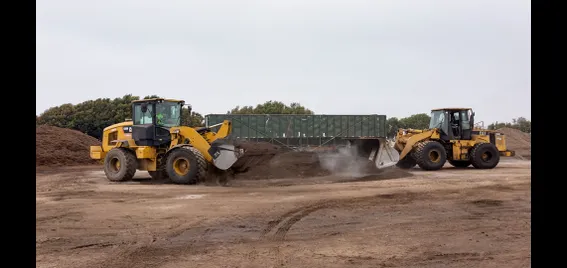
End markets and procurement mandates
As volumes ramp up, industry stakeholders have been increasingly focused on finding the necessary processing infrastructure and viable end markets to satisfy the law’s procurement requirements.
Newsom recently signed a law (AB 1985) to update requirements that were previously set to kick in this year for jurisdictions to procure certain amounts of compost or biogas. Now they’ll be phased in over the next three years, starting with a requirement to hit 30% of their targets in 2023, growing to 100% in 2025.
Camarillo said he’s heard a mix of reactions from jurisdictions, but overall he feels this new law will provide useful breathing room. Agromin has launched its own portal, California Compost, to help jurisdictions purchase compliant material from the company and receive free advice regardless of whether they buy anything.
The portal helps jurisdictions calculate their needs and locate products, with the future potential to also provide biogas calculations. Camarillo said there is still a lot of confusion about what types of compliant projects can be done, how to manage them properly and how to source the material. Common examples include using compost for city parks, cities brokering the sale of compost to local landscapers or agricultural sites, or other concepts such as carbon farming.
"What I don't want to happen is cities get a bad experience using compost,” he said. "Eventually they'll become a customer down the road with other projects.”
While there has been some discussion about whether the market can keep up with increasing volumes and shifting procurement priorities, Neil Edgar — executive director of the California Compost Coalition — said there is already ample use of compost by farmers in certain parts of the state and high demand through California’s Healthy Soils program.
"For the 20-plus years I've been doing this, the supply and demand have balanced out over time. So as infrastructure has grown and supply of compost has been developed, it's been able to find a ready market,” said Edgar during a hearing. Still, he highlighted costs related to transportation as a challenge.
This cost factor was also raised by others in the Sept. 22 hearing, including commentary about how jurisdictions in more rural parts of the state have to pay a great deal to ship in compost. According to one Agromin representative, transportation costs could be five to 10 times the cost of the relatively inexpensive compost .
Further complicating the equation, haulers operating along state lines said they’ve been stymied by the law’s requirement that the compost be processed and procured specifically within California.
"We've been really discouraged that the procurement requirements do not allow us to sell our compost through the existing markets that we've built in our region from scratch, and also that our existing compost facility across the border in Yuma, Arizona, cannot process materials and count toward procurement services,” said Kayla Robinson, a senior associate at Environmental & Energy Consulting, on behalf of CR&R Environmental Services.
This issue was also raised by Tahoe Truckee Sierra Disposal, a hauler operating in Northern California, which takes some material to a Nevada compost facility. The company also noted the distance between some of its collection routes and the nearest transfer station or processing site can be more than 100 miles. Combined with collection challenges related to bears and weather issues, the company is asking for more nuance in the state’s enforcement.
"We are concerned about the collection and transport emissions outweighing the intended emissions reduction,” said Ryan Collins, who works in operations management at Tahoe Truckee, adding that calculations from the U.S. EPA’s Waste Reduction Model, or WARM, found a negative effect. “This is painful to know, especially because we support the overall emissions reduction mission."
Other hearing speakers also raised concerns about how the market for biogas from anaerobic digesters would evolve. Yaniv Scherson, chief operating officer of Anaergia, said the state’s Low Carbon Fuel Standard market is set up in a way that puts locally-generated renewable natural gas at a “disadvantage” compared with out-of-state dairy gas. Plus, multiple companies raised questions about how the state’s upcoming clean fleets rule would affect investments in compressed natural gas vehicles, which can be powered by such facilities.
Looking ahead
The results from California’s landmark organics recycling law will soon come into focus after years of pandemic disruptions and other challenges with ramping up. While some jurisdictions have welcomed compliance delays, those in the waste industry haven’t necessarily felt the same.
Anaergia built its Rialto anaerobic digestion facility, the largest of its kind in North America, to be ready for expected compliance deadlines in January 2022. To date the site has been “grossly underfed,” according to Scherson.
"It's really important to ensure that enforcement stays on time, that it comes firmly,” he said, adding that if such delays continue, “then investor confidence goes away, and future facilities won't be built."
Other companies, including the solid waste industry’s two largest players, conveyed a similar message in the latest hearing.
"We are, quite frankly, too far down the road in implementing 1383 to do a 100% change in how we're operating," said Chuck Helget, director of government affairs for Republic Services, who also advocated for a targeted reassessment of the wide-ranging regulations. "SB 1383 is by far the most significant piece of policy that we have seen in the waste industry in the past 30 years.”
Alex Oseguera, WM’s state director of government affairs, similarly said the law has a big effect on his company’s regional operations and asked for further nuance in the discussion.
“Now that we're on the ground in implementation, there's a tremendous need for ensuring that if something was written a certain way, but it's not really working, or it needs some modifications, that we do that,” he said. "For us to be successful with the regulation, and the law, and get to the benefits that are expected in terms of environmentalism, there needs to be dialogue."
While many stakeholders have testified in the hearings, and shared perspectives in other ways, Tseng said some may still feel constrained. He said multiple people from the public and private sector didn’t want to publicly share negative comments about CalRecycle.
"The fear is they can pretty much make life miserable for the local jurisdiction or for the business,” he said during the hearing.
CalRecycle was not present to respond in that hearing, but it shared a follow-up reaction.
“CalRecycle values the decades-long partnerships we have built with jurisdictions and encourages everyone to engage in open discussion about the implementation of this law, which is critical to reaching California’s climate goals. CalRecycle is committed to working with jurisdictions to overcome barriers and reach compliance with the SB 1383 statutes,” said Machi Wagoner in a statement.
Rarick said the Little Hoover Commission will address all of these potential issues in its upcoming report, which will be another milestone in what’s sure to be a yearslong discussion about optimizing California’s organics recycling experiment.







